Are you struggling with sluggish scrolling or japanese forbidden sex videomuted movement? Are the default settings in Windows causing rodent rage? Fear not, as there's an easy way to master your mouse malcontent!
Here's a quick and informative guide for changing your mouse's sensitivity in Windows.
When talking about mouse sensitivity, we're referring to how much the cursor moves on the monitor when you shift the mouse in a particular direction. Low sensitivity means you need to move the mouse a lot, in order to get the cursor to shift places.
At the other end of the scale, a tiny nudge of your hand can result in the pointer flying off to the corners of the monitor. You may well want this to happen, or something entirely different, but whatever you want, there are two ways of changing this in Windows 10 and 11.
Let's start with the simplest method: press the Windows keyand Itogether (or click on the Settings cog iconin the Start Menu). From here, select Bluetooth & Devicesin the left menu, then the Mouse option in the main menu.
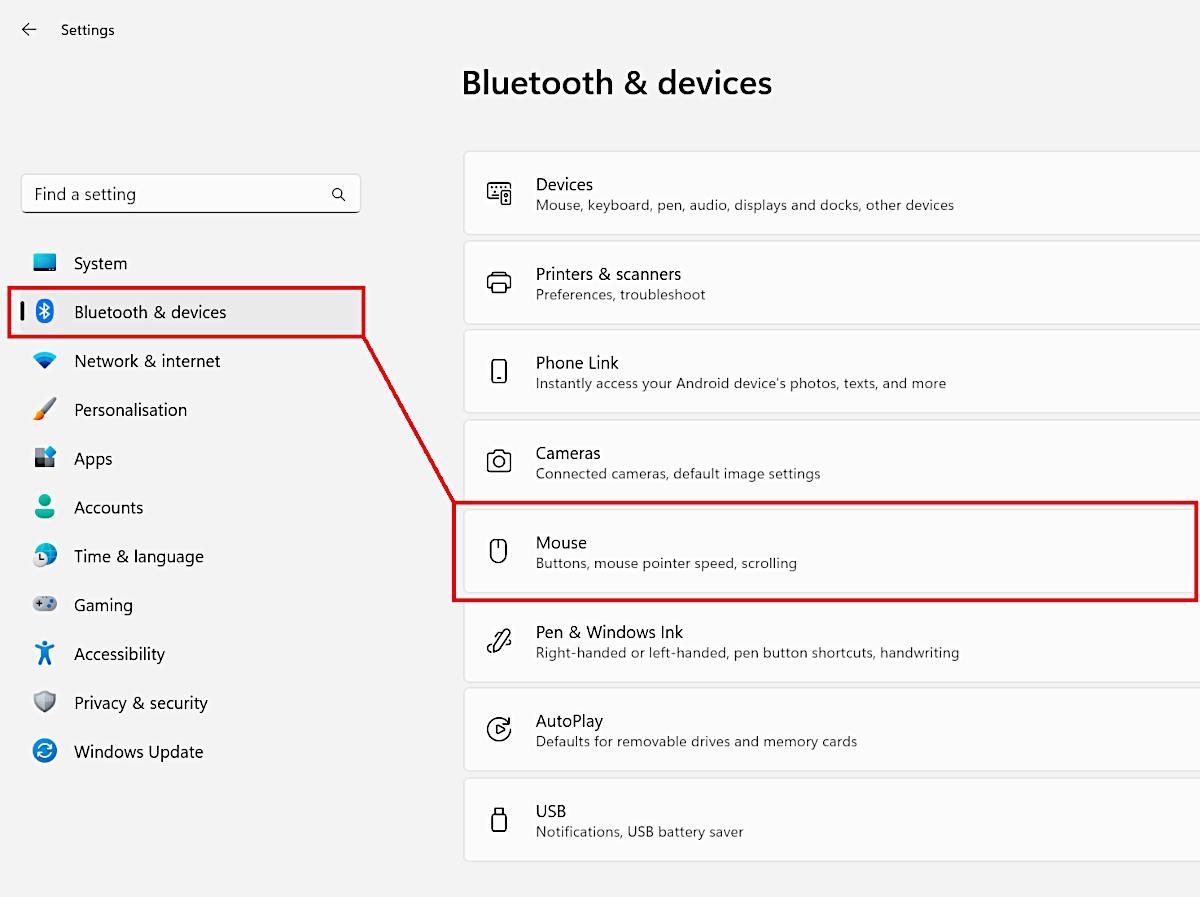
You'll be shown a pretty basic settings screen, but that just makes it easier to quickly change the sensitivity. The mouse pointer speed has a slider, where it ranges from a value of 1 to 20 (slowest to fastest) – the numbers will appear when you click on the slider/button.
Moving this about will cause the sensitivity to change instantly, so if you accidentally drop it down to the slowest speed, it'll take a few moments for you to get it back up to the right level!
It's always best to do small changes to start with and then test them, in a variety of situations (e.g. browsing the web, using a productivity application) to see how it all feels.
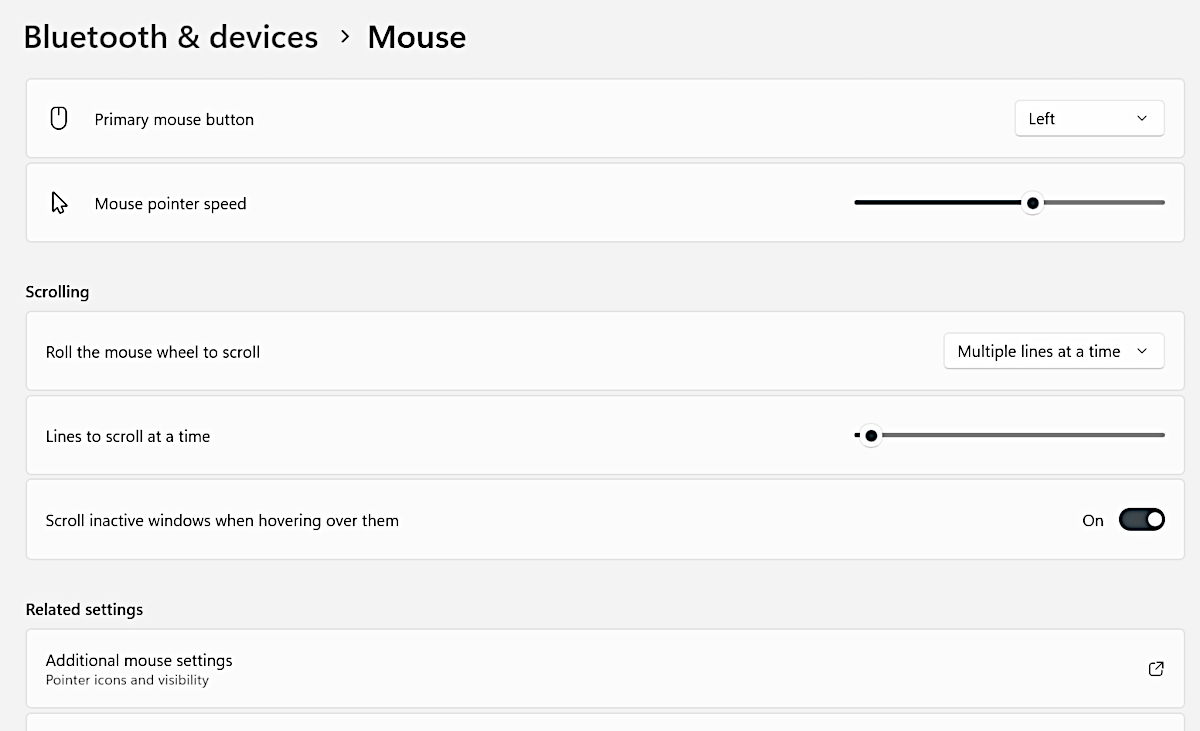
There are options to adjust the mouse wheel sensitivity, too, but before you do that, let's check out the other method for altering mouse settings.
The older Windows Control Panel, accessed further down from the mouse pointer speed, does exactly the same things as Windows Settings, but we find it to be a little more informative, and it has additional things you can alter.
Click on the Additional mouse settingsoption and a new window, titled Mouse Properties, will open up – we'll refer to this method from now on.
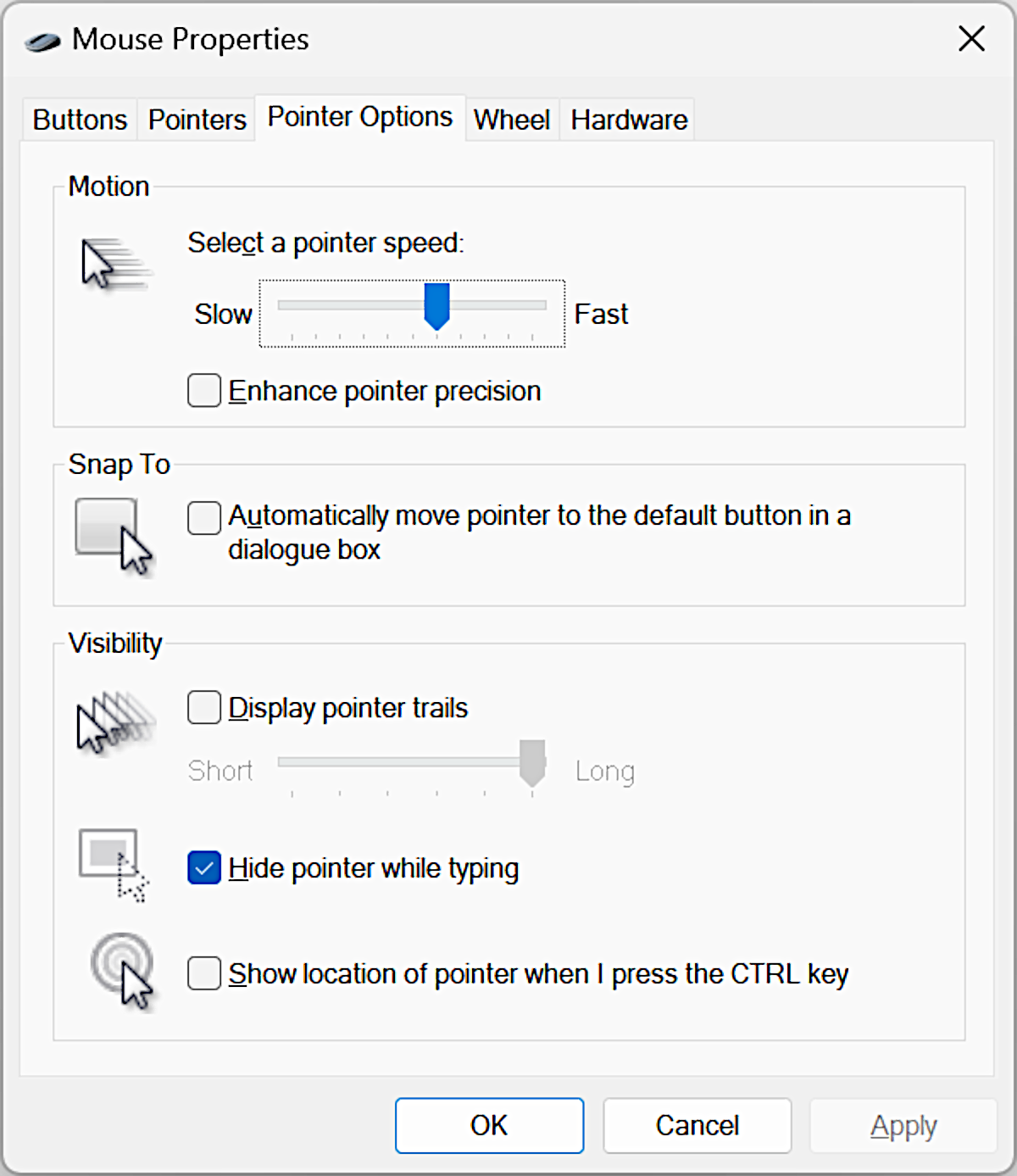
Choose the Pointer Options tabon the top and you will see a slider for pointer speed. Move it to a level you want to test, click on the Apply button, and then you'll be using the new sensitivity.
Note that these two methods are both altering the same settings – one will override the other, but the second one always needs to you to click Apply or OK to make it work.
While we're here, let's cover the Enhance pointer precisionoption. Activating this, by clicking on the box and then hitting Apply, will then dynamicallyalter the mouse sensitivity. So the faster you move your mouse, the faster the cursor will move, and vice versa.
Faster is actually the wrong word to use here – it should be acceleration.
So if you go from moving slow to quick, accelerating your motion, the sensitivity will increase and the cursor will then zoom off. This can make it somewhat hard to predict exactly where the cursor will end up.

We actually recommend leaving this disabled, simply because the more you get used to using your mouse, at a fixed sensitivity, the easier it becomes to "learn" how the cursor will react to your input.
Lots of PC games have the same setting in them (mouse acceleration) and we'd recommend disabling it in those, too. It's better to just increase the overall input sensitivity, rather than having an acceleration. While we're still in the mouse's control panel, let's check out some other options.
Another important mouse setting that's related to cursor speed or mouse sensitivity is called DPI(dots per inch). A feature most commonly found on gaming and enthusiast-level devices, this setting isn't controlled within Windows, but in the app that comes with your mouse. In some models, it can also be controlled at the hardware level using buttons on the mouse itself.
DPI is in essence how many screen pixels the cursor should move for one inch of mouse movement. The higher the DPI value, the more pixels the cursor will travel, and vice versa.
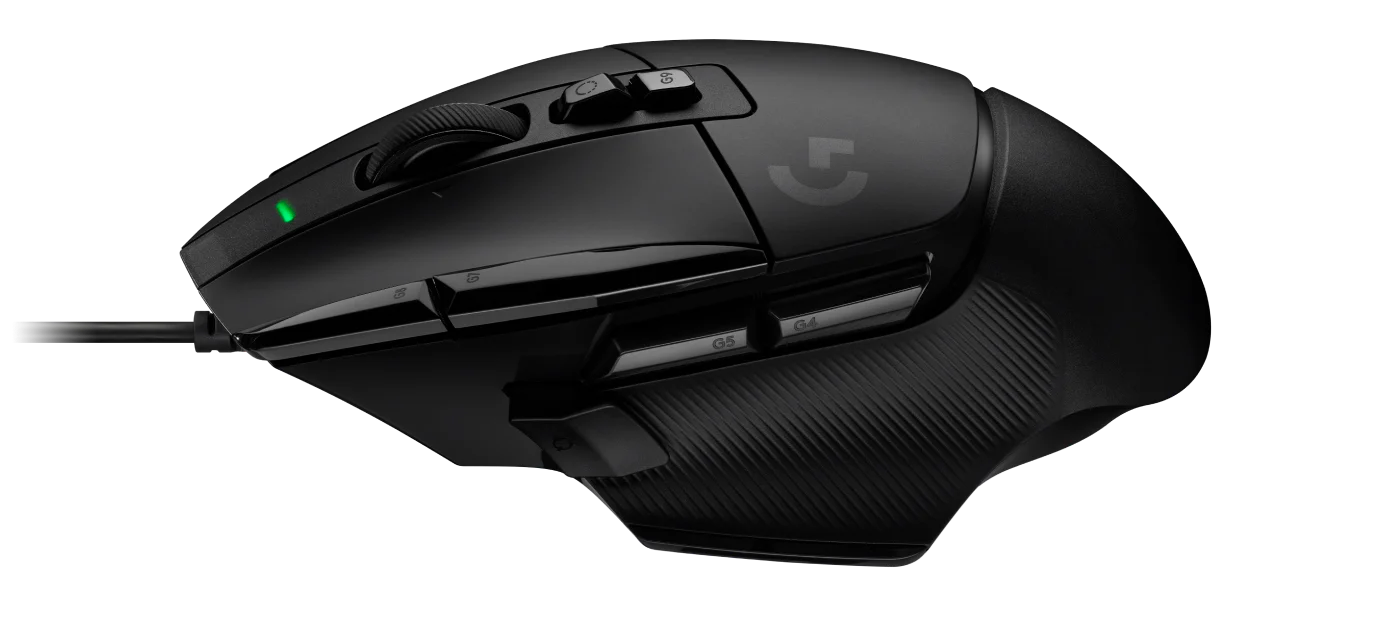
So if you're finding that the motion is too sluggish, try raising the DPI, and if it's too snappy, lower the value. For example, some professional gamers prefer using a very low DPI to improve their fine control over the precision of the crosshair in an FPS game.
This does mean their arms have to move through big arcs across the desk, in order to sweep the camera about, hence why other gamers go with a much higher DPI value, so that they only need to twitch their wrists slightly to get the motion they want.
There's no "best" DPI setting, just like there's no right setting for pointer speed – it's all about personal preference, so don't be afraid to experiment.
Even the most basic mice will typically come with a wheel, nestled in between the main buttons. Not only can this function as an additional button, but rolling the wheel back and forth will cause the contents of a window to scroll up and down.
How far it will scroll is set in the control panel – choose the Wheel taband you'll see options for vertical and horizontal scrolling (the latter requires the appropriate hardware support, though).

By default, vertical scrolling is set to 3 lines per individual wheel notch rotation, so if you want it to be more sensitive, increase the number of lines. Or, by selecting the second option, you can make the wheel scroll entire pages. We usually like to tweak this on a high-end precision mouse to around 9 lines per scroll.
But, just like with pointer sensitivity, there's no right setting here – it's all about what works for you.
Of course, if you've never altered any of these values over the years of using Windows, then you're going to be most comfortable with the default settings.
Some of the things we've covered (pointer sensitivity, scroll speed) can be changed on the mouse itself – it just depends on what model you have.
The Logitech MX Master 3, for example, has a wheel that can be set to freely scroll, rather than one notch at a time, by simply pressing a button behind the wheel. Cue instant dynamic scroll sensitivity!
Other mice, such as Razer's DeathAdder V2, have plenty of extra buttons but rather them being fixed in function, you can alter what they do via the manufacturer's software.
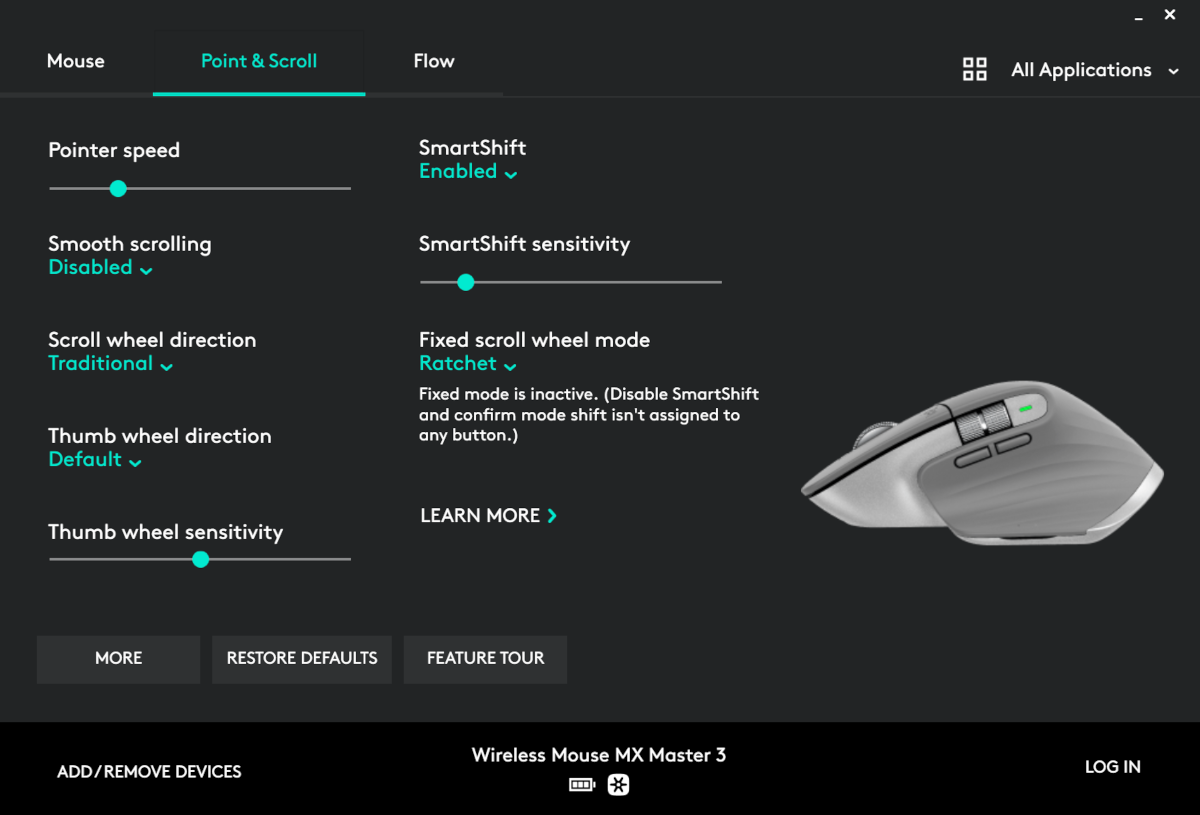
These programs always override any setting in Windows, so if you want to have some consistency with your changes, it's always best to use the same method: Windows Settings, the old Control Panel, or your mouse's maker app.
You'll probably want to experiment a little bit with mouse sensitivity, to get it just right for your needs.
So test away – nothing will get damaged or permanently stuck, and you may well find an optimum setting for mastering your mouse!
Masthead credit: maar gaming
 Delegation of JA Leaders Meet with Prime Minister Abe
Delegation of JA Leaders Meet with Prime Minister Abe
 Hacker steals $49 million worth of cryptocurrency from Upbit exchange
Hacker steals $49 million worth of cryptocurrency from Upbit exchange
 Climate change models have been accurate since the 1970s
Climate change models have been accurate since the 1970s
 Twitter forgets dead people, suspends plan to delete inactive accounts
Twitter forgets dead people, suspends plan to delete inactive accounts
 Doizaki, Krauss Awarded Spring Decorations
Doizaki, Krauss Awarded Spring Decorations
 I'm living for the weird Disney+ '60s and '70s gems that I'd forgotten
I'm living for the weird Disney+ '60s and '70s gems that I'd forgotten
 Peloton's holiday ad has serious horror movie vibes
Peloton's holiday ad has serious horror movie vibes
 Google won't say why it took down more than 300 Trump ads
Google won't say why it took down more than 300 Trump ads
 ‘Portraits of Courage’ to Celebrate JA WWII Vets
‘Portraits of Courage’ to Celebrate JA WWII Vets
 Programmer arrested by U.S. authorities after North Korea cryptocurrency talk
Programmer arrested by U.S. authorities after North Korea cryptocurrency talk
 VJCC Awards Scholarships to 2 Graduating Seniors
VJCC Awards Scholarships to 2 Graduating Seniors
 Alexa can now sound as depressed as you
Alexa can now sound as depressed as you
 Pantone's 2020 Color of the Year carries more than one message
Pantone's 2020 Color of the Year carries more than one message
 Woman claims restaurant review in Washington Post exposed husband's affair
Woman claims restaurant review in Washington Post exposed husband's affair
 Former Terminal Islander to Share Her Story
Former Terminal Islander to Share Her Story
 ICANN says it’s powerless to stop billion dollar .org takeover
ICANN says it’s powerless to stop billion dollar .org takeover
 ICANN says it’s powerless to stop billion dollar .org takeover
ICANN says it’s powerless to stop billion dollar .org takeover
 MacBook Pro keep shutting down? Apple has a weird fix.
MacBook Pro keep shutting down? Apple has a weird fix.
 Resources for Finding Your JA Roots
Resources for Finding Your JA Roots
 Craigslist finally releases an iOS app in *checks calendar* 2019
Craigslist finally releases an iOS app in *checks calendar* 2019
Best Samsung TV deal: Save $70 on 65Catch early Black Friday deals on books at Walmart, AmazonDecompose for less: Lomi home composters now up to 40% off for Black FridayElon Musk threatened to buy MSNBC. Joe Rogan jumped in with ideas, too.Decompose for less: Lomi home composters now up to 40% off for Black FridayLe Sserafim on tech, style, and staying connected in a digital worldBest Target Circle 360 deal: How to get free giftMeta, Zuckerberg threaten human rights by allowing dehumanizing speech, advocates warnCES 2025: The Sleepwave For Me Buds track your brainwaves while you sleepBest LG TV deal: Save $170 on 43 This 'Harry Potter and the Cursed Child' character looks set to be an unlikely star South Korean cosmetic brand Laneige has a new fashion collaboration and it's a hoot JoJo isn't going to say sorry for her new song (or anything else for that matter) Kanye West doesn't like thinking and Kim Kardashian can smell cavities Australia used to be home to a flesh Twitter has a strong message for Bernie Bros who think Trump and Hillary are the same YEAH! Howard Dean brings back the 'Dean Scream' #TBT: 13 politicians you didn't know were super HOT back in the day Watch Demi Lovato get real about mental illness at the DNC Bernie Sanders gets booed after endorsing Hillary Clinton
0.1991s , 14173.9921875 kb
Copyright © 2025 Powered by 【japanese forbidden sex video】Enter to watch online.Magically Master Your Mouse Movement,Global Perspective Monitoring